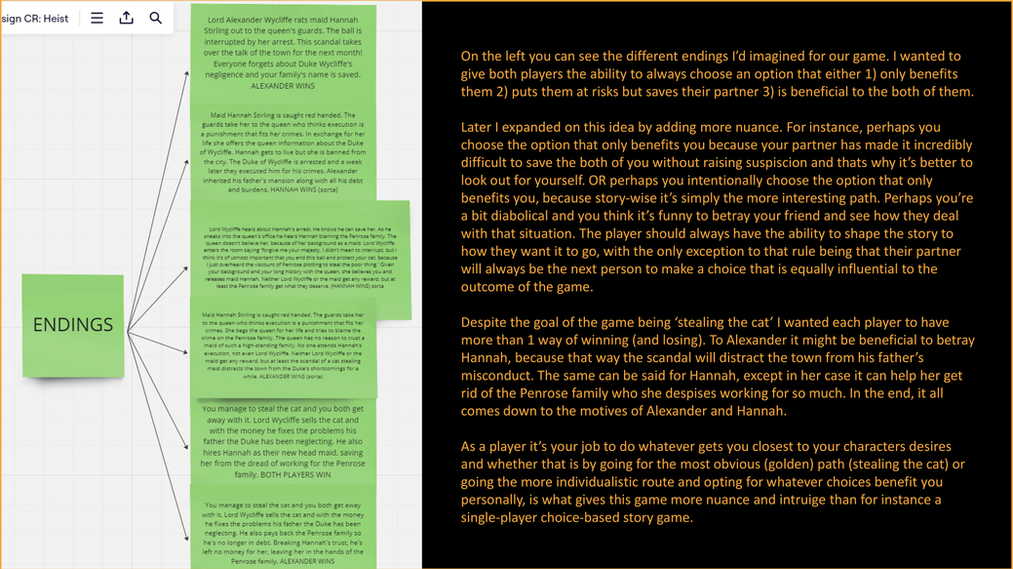


The power of PowerPoint;
Proving a concept
fast and efficiently




About this project
With very little experience in narrative design, I dove headfirst into two very game story dominant concepts for my narrative design course at Abertay University. Though I’m convinced most games benefit from having narrative whether it’s more in the background or the driving factor of the game, I’d never actually given much thought to what goes into designing a narrative. As an 3D artist I'd always used narrative as a tool to make my environments more believable by practicing environmental storytelling, but for this project I was the narrative designer. What makes a story unique, yet believable? Is writing the same as narrative design? Can I write a compelling story or is that something that requires years of studying? How do I balance story and gameplay? These are some of the questions I encountered while working on this project and Echoes of Paris.
The theme for this assignment was ‘The Heist’. I immediately thought about a cooperative game that makes you question the loyalty and reliability of your partner. In class we talked about using tension to keep the player’s attention, so I figured what better way to create tension than making the players alert and suspicious of their partner’s true intentions. This ‘real intentions’ narrative is a common theme in spy/crime stories, which I fully planned on using.
Drawing inspiration from the Netflix series ‘Bridgerton’, allowed me to use their universe as a base for my narrative. The two characters I’ve written, Miss Hannah Stirling and Lord Alexander Wycliffe, both have a fixed background that, at the start of the game, explains their motive for wanting to steal the queen’s cat. It’s then up to the players to achieve said goal. The dialogue options are tailored to each character to create a more cohesive and believable story, but the intent is to make the player become Hannah or Alexander. Perhaps the player is more selfish and decides to keep choosing whatever option is best for their character rather than keeping the other player in mind. This way the psychology of the player becomes the psychology of the characters they’re playing as. The scope for the project definitely increased as I was trying to give the players more control. While mapping out the branching paths I tried converging the timelines back to about 6-12 different endings, which was a challenge.
Because the game is turn-based it’s not strictly linear. It jumps from one person’s perspective to the next changing, the focalization with every turn. I tried to create an internal focalization by adding cursive text that acts as the character’s thoughts. This should give the player hints of what would be the preferable course of action in certain situations. Sometimes it would appear as an afterthought that let’s the player know the consequences of their choice without having to create an entire scene with ‘spoken’ dialogue.
Proving our concept wasn't a big part of the assignment, but I really wanted to see my concept come to life in a short demo. Since the gameplay would only consist of clicking different dialogue options I decided to make a demo in PowerPoint. This worked very well as a short-term solution/proof of concept, but the bigger the demo, the harder it was to keep the slides organized.
With simple mechanics and an unexpected game engine (PowerPoint), this first concept turned into a very valuable first attempt at narrative design. It allowed me to practice what we’d talked about in class and showed me that having a lot of branching paths was a challenging feat that could turn into a mess had it not been mapped out carefully.















